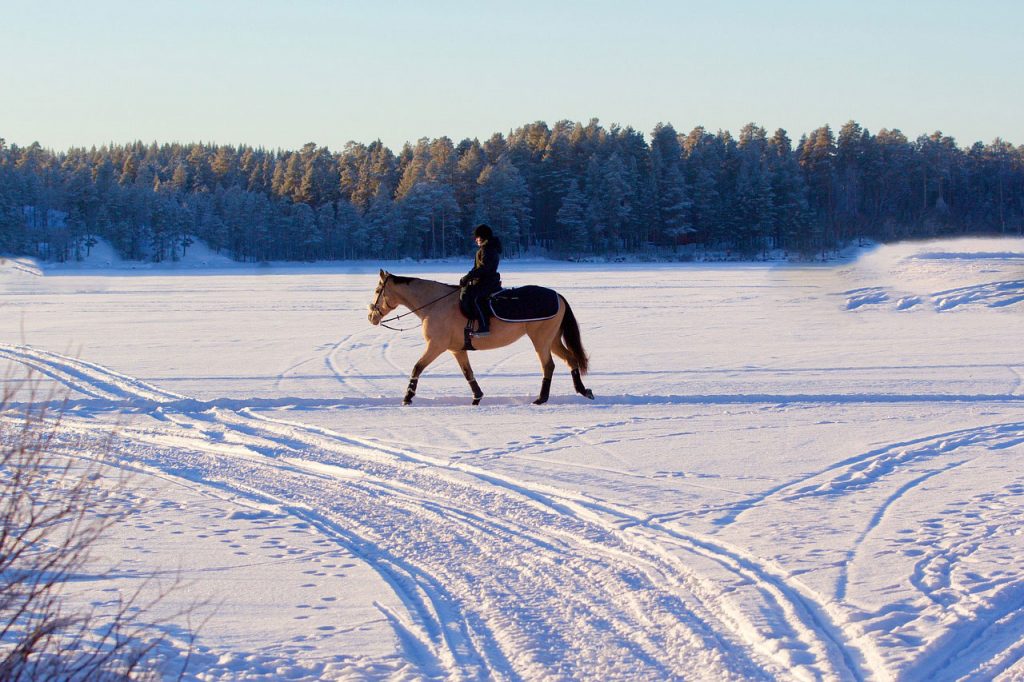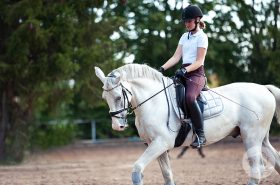This seems to be a much debated topic and I was curious to learn what the answer is.
The most common concern I have heard about Winter riding is the cold air damaging the horse’s lungs. One article from a 2014 SmartPak Ask The Vet blog mentioned that studies have shown breathing cold air repeatedly and rapidly can cause significant stress on the horse’s airways. The horse’s respiratory tract is designed to warm air before it reaches the lungs, but because exercise causes faster breathing the horse has less time to do so before the air hits the lungs. It is worth noting two things, however: 1) “cold” for purposes of the study is considered 23 degrees Fahrenheit; and 2) in one of the studies, the horses were cantering for over 15 minutes on a treadmill, an activity which may not be what the typical cold weather rider is doing.

Exercise in colder weather can be very beneficial to the horse as long as it isn’t excessive. Even a brisk walk can do wonders for the cardiovascular and the central nervous systems. For some horses, like Chloe, any sort of exercise is crucial for her brain. With too much time off, it feels like you are starting over training-wise, even though she is 19! Despite the known benefits of exercise, there are still serious considerations that need to be taken into account when you ride in any relatively cold temperature (I say relatively because cold for a NC horse is different than cold for a horse from Montana). Here are a few aforementioned considerations that I saw repeatedly mentioned in other articles.
Take into account your horse’s fitness level. If your horse is out of shape it is entirely unfair to ask your horse to breathe even harder in the colder temperatures.
Spend more time on the warm up and cool down. Warming up helps to circulate blood flow, a process that takes longer when temperatures are lower. A good rule of thumb is to spend 15 minutes on both warming up and cooling down. Be sure to dry off your horse as much as possible before putting away or blanketing.
Check the footing. Hard, frozen ground can feel like concrete to a horse’s hooves and legs. When the ground has no “give”, it is safest to just stay at the walk. Also, beware of footing that looks like frozen churned up mud. It can bruise hooves and twist joints.
Also important is whether your horse is accustomed to the climate. A new arrival from Florida may have never experienced freezing temperatures before.
A few quick polls on my Instagram account show that the majority of us are still riding in the Winter. A whopping 93% of pollers responded that they do ride in the Winter, with 70% saying they ride in the teens and 30% ride in the negative temperatures! The bottom line is that when you are riding your horse in any extreme temperature, hot or cold, you need to use common sense and pay special attention to how your horse is feeling.
Stay warm 2 legged and 4 legged friends!
**
Andrea Wise graduated from Wake Forest University School of Law in 2007, where afterwards she spent 7 years as a commercial real-estate attorney. In 2012, she launched the equestrian company, Pony Glam, which makes and sells the only colored hoof dressing for horses. She is also the voice behind the new equestrian lifestyle blog, Horse Glam. Andrea lives in Charlotte, North Carolina, with her husband, Zach, two young children, cat and horse, Chloe.
Featured photo by @Warmbloodsandwine



